But, unfortunately, I haven't caught that species yet.
Instead, I'm getting black-tailed jacks. And, since white-tails and black-tails don't seem to like to intermingle, this might not bode well for my desire to cam trap the whites.
I.e., even at 7,000 feet, my Mono Basin survey area might not be high enough. I may need to push further up into the Jeffrey pines.
That said, there are some fine looking black-tails over there, such as this jack, that stopped to hang out with the camera several times...
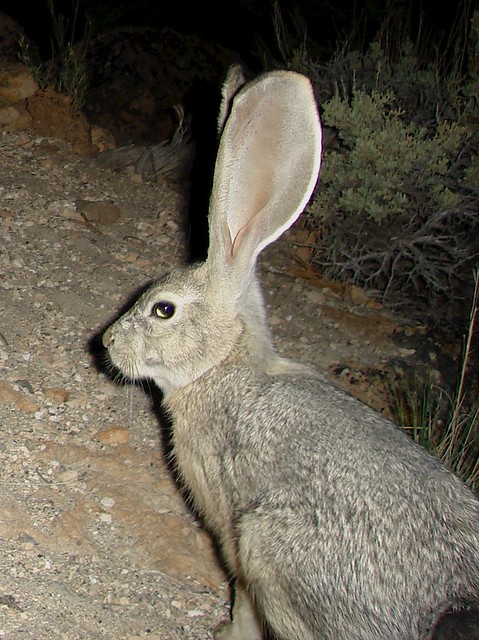
Lepus californicus, the black-tailed jackrabbit, pauses to one-eye the cam
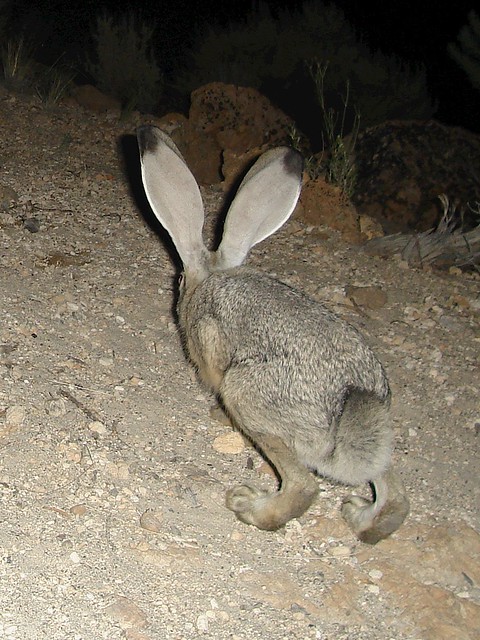
Slow crawl
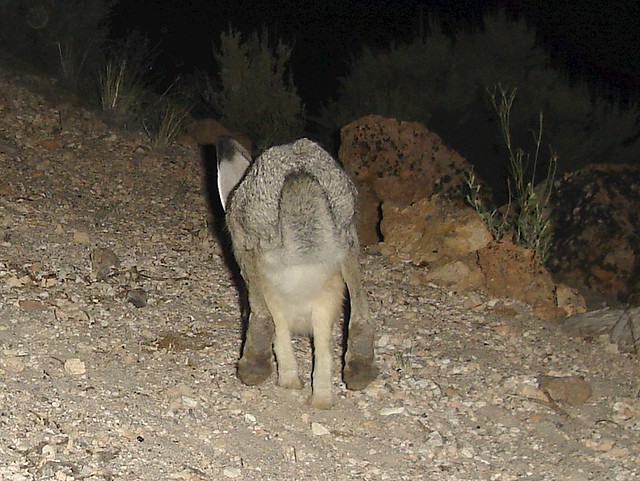
Hop
I think it's pretty well known that aside from great hearing, the jacks aerials are also used for heat dissipation (dilate and fill your ear's blood vessels, stick into a cool breeze - ahhhhh). They even wiggle them to increase the vasodilation radiation.
But did you know their ears are also used for silent communication? Yep - research is showing that they flash and turn the black tips to create a kind of "jackrabbit ear semaphores."
"Hey - look - Jack is earing us a message."
"What's he saying?"
"There's either 2 coyotes coming, or he has an itch."
And that's not all... they also use their fabulous flappers to confuse chase predators. No - they don't signal a fake left turn and then go right ala Bugs Bunny - they keep them up, run into a brushy area, drop them flat to their back, and then turn and dart down a different path. Slick.
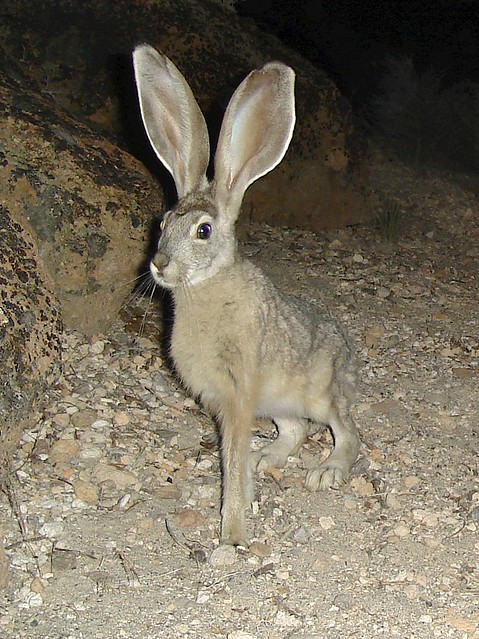
Ears on high alert
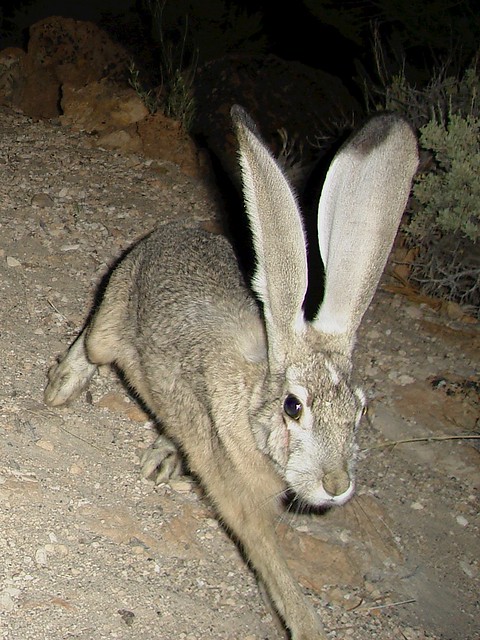
Showing off its keep on truckin' strut

Plopping down for a groom in the glow of the camera flash?
Notice that there's no ticks in those ears at all - that is one healthy looking jack. And the fur color is much lighter than any I've seen on the west side of the Sierra. Matches the habitat perfectly.
Now if I can just find a white-tailed as photo friendly...
====
References:
- Kamler, Ballard - Texas Tech University - Ear Flashing Behavior of Black-tailed Jackrabbits, The American Midland Naturalist, April 2006
- Stoner, Bininda-Emonds, Caro - UC Davis and Leiden University - The Adaptive Significance of Coloration in Lagomorphs, Biological Journal of the Linnean Society, 2003, #79
- Wikipedia - Black-tailed Jackrabbits
- Wikipedia - White-tailed Jackrabbits
- Nature of a Man (this blog) - posts on cam trapping the Mono Lake Basin

he's gorgeous!
ReplyDeleteGreat shots, and interesting primer on rabbit ears! Fun stuff!
ReplyDeleteBeautiful shots, RT!
ReplyDeleteI've seen jacks at Mono a couple of times and never realized they were a different species. Interesting to learn about the ear-semaphore too!
ReplyDeleteThose are fabulous ears. It made me wonder if mule deer use their ears to communicate...
ReplyDeleteYes, John, the Mono area has all sorts of rabbits and hares - nuttall's, pygmy, showshoe, white-tailed and black-tailed. Might even be pika around.
ReplyDeleteKB - good question. Mulies definitely use them for heat dissipation.